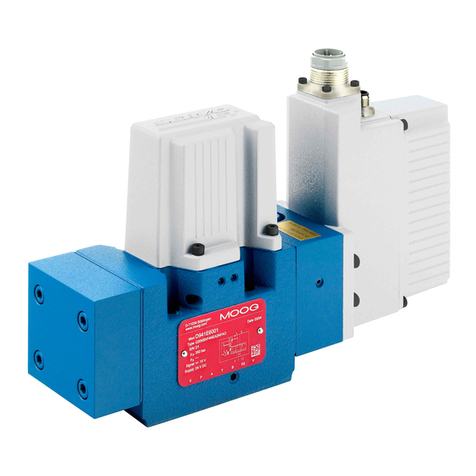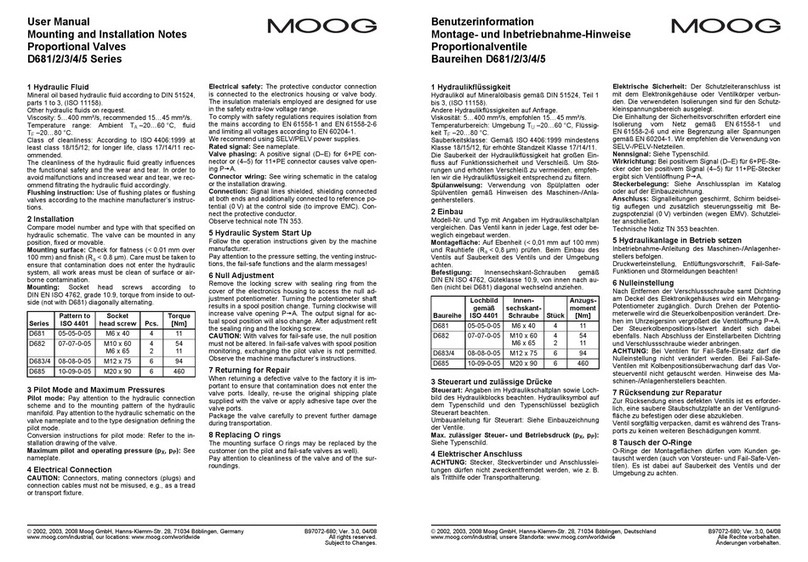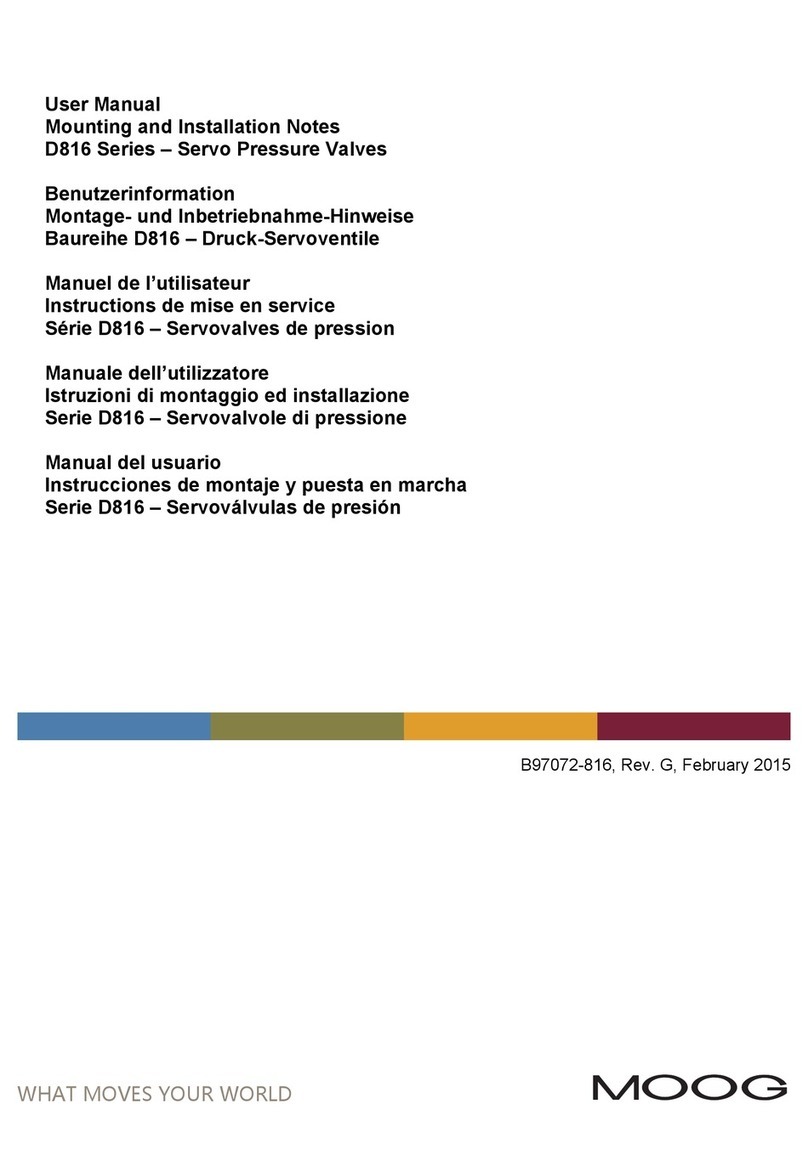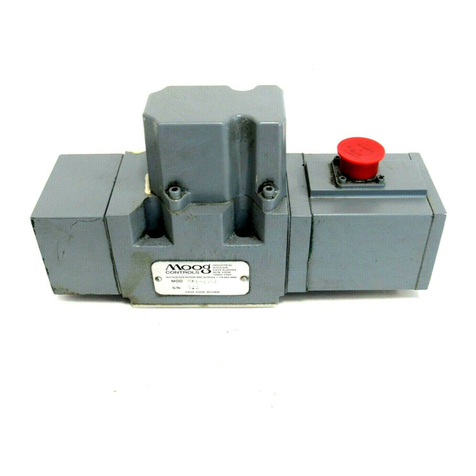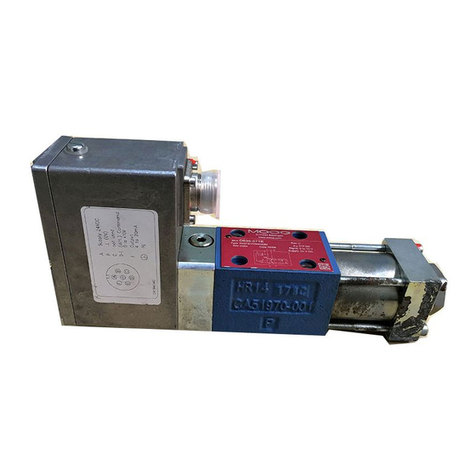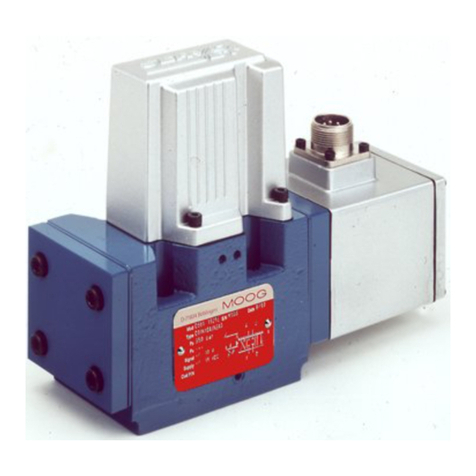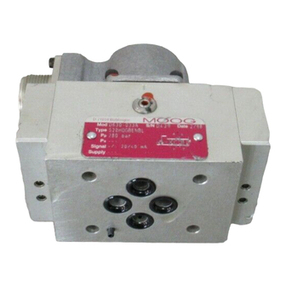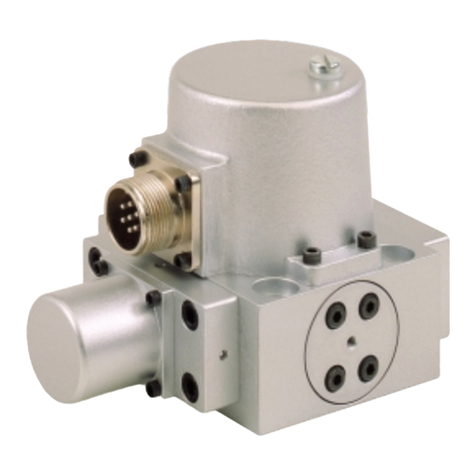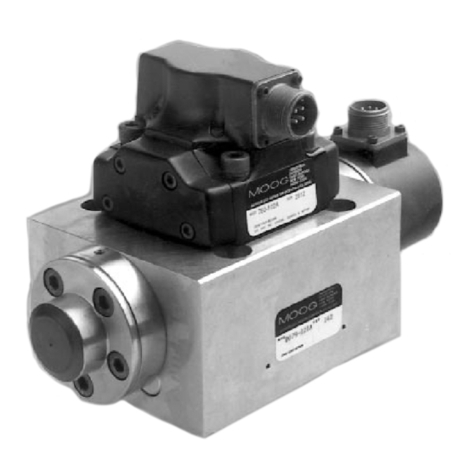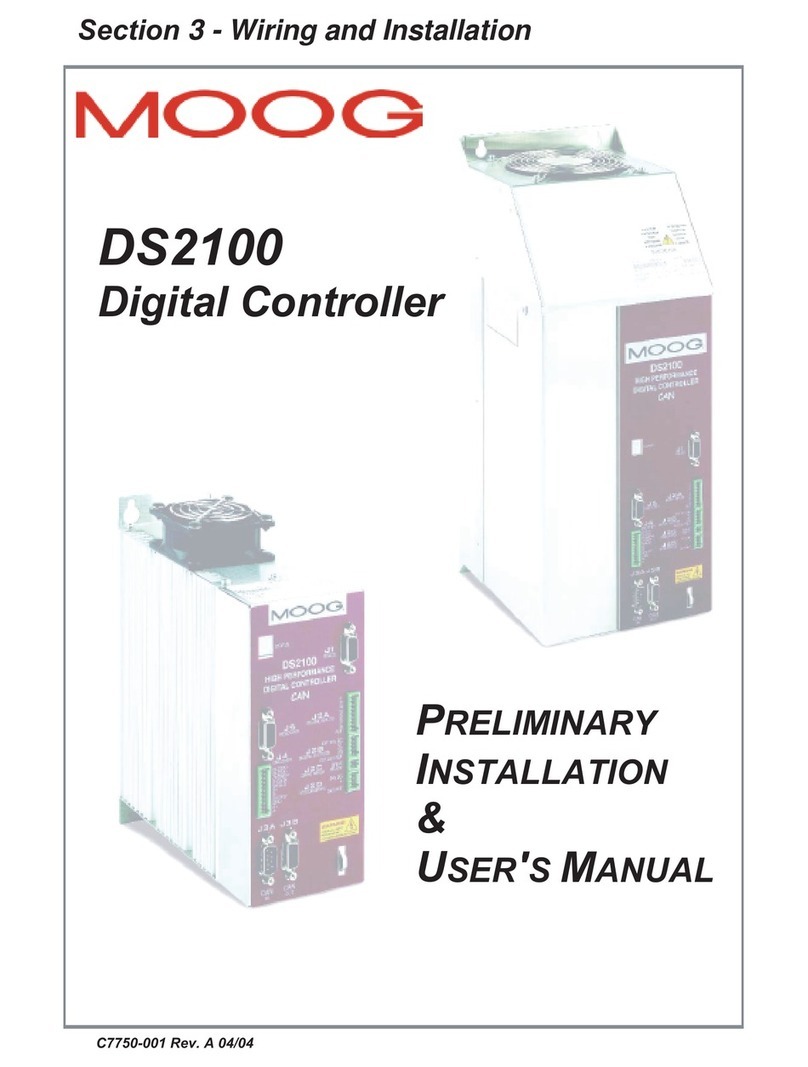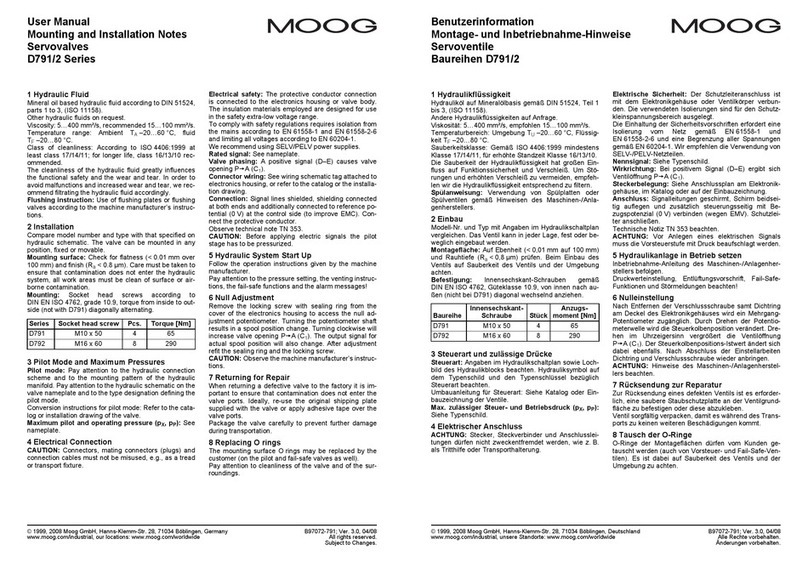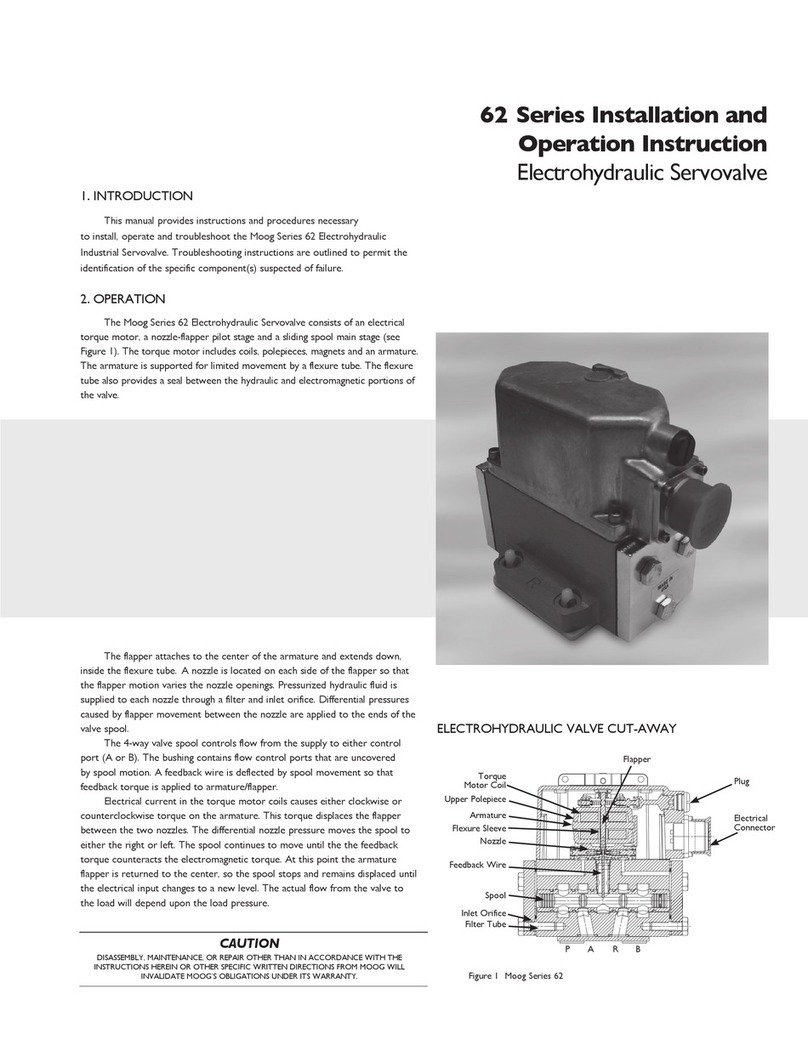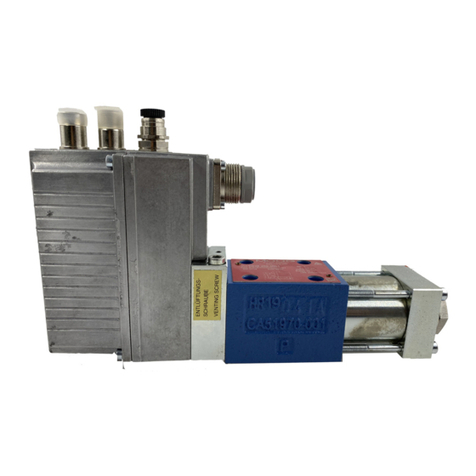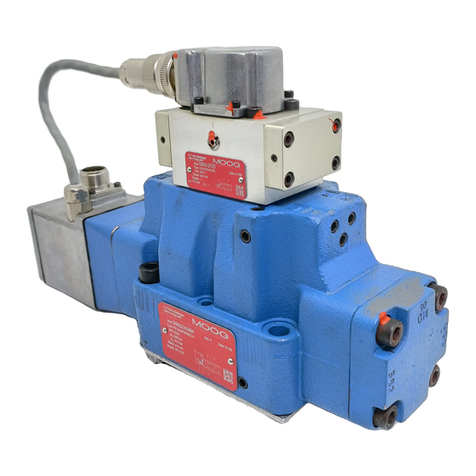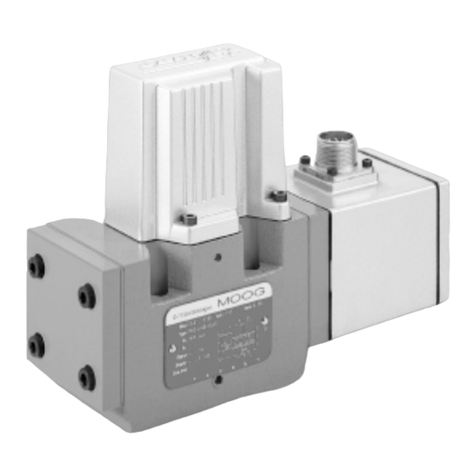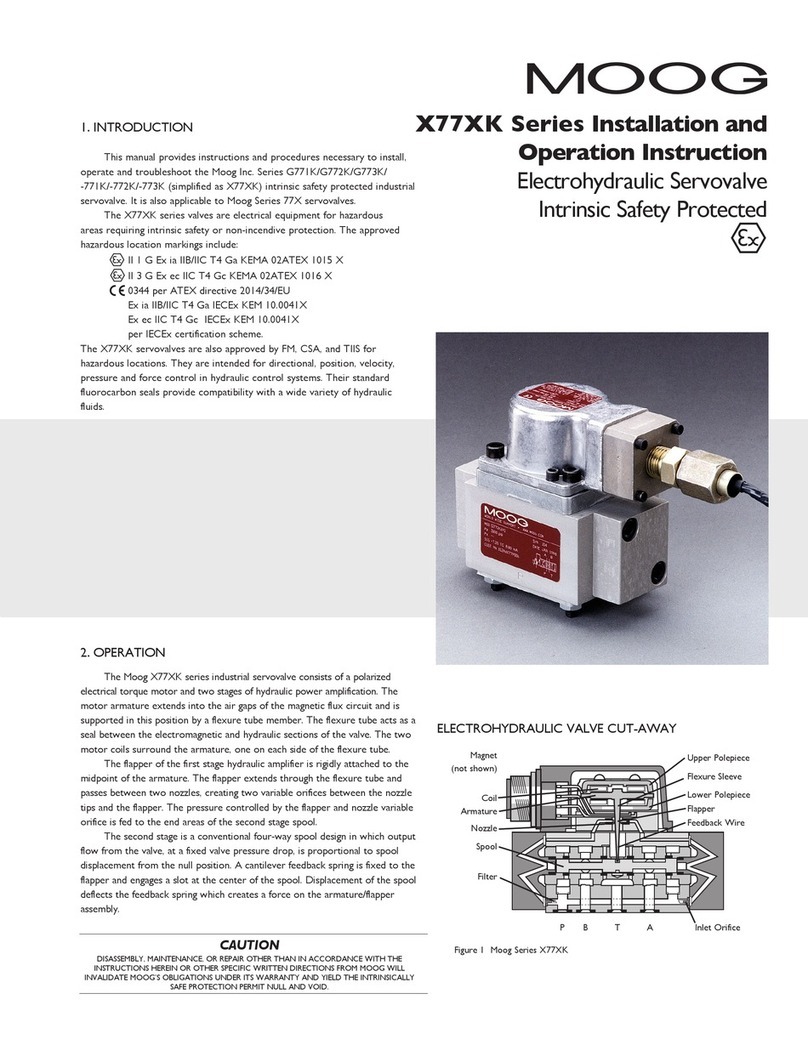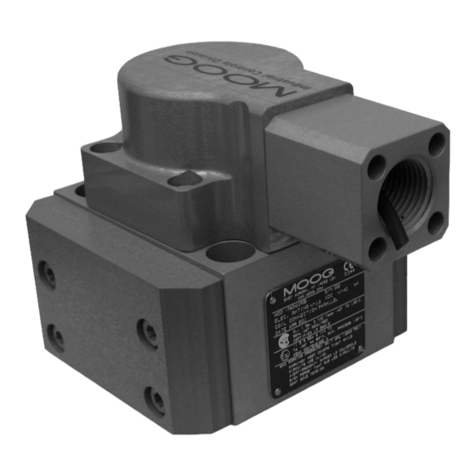
© 2007 Moog GmbH Operating Instructions D661K, D662K, D663K and D664K (CA49305-001; Version 3.0, 10/07) 3
Table of Contents
1 Safety Instructions page 3
2 Description page 4
3 Technical Data page 7
4 Installation page 10
5 Setting up page 14
6 Maintenance page 14
7 Malfunctions – Causes and Troubleshooting page 15
8 Declaration of Manufacturer page 15
9 Tools page 15
10 Spare Parts and Accessories page 16
11 Ordering Information page 18
1 Safety Instructions
D661K, D662K, D663K and D664K Series
1.4 Selection and qualification of personnel
Service work carried out by the user on explosion protection
valves is prohibited, as intervention by third parties renders
the explosion protection permit null and void.
1.5 Safety instructions for specific operational phases
1.5.1 Take the necessary precautions to ensure that the valve is
used only when in a safe and reliable state.
1.5.2 Check the valve at least once per working shift for obvious
damage and defects (e.g., leakage or damaged cables).
Report any changes to the responsible group/person
immediately. If necessary, stop the machine immediately
and secure it.
1.5.3 In the event of malfunction, stop the machine/plant
immediately and secure it. Have any defects rectified
immediately.
1.5.4 If the machine/plant is completely shut down for
maintenance and repair work at the valve, it must be
secured against inadvertent start up by:
ULocking the principal control elements and
removing the key.
Uattaching a warning sign to the main switch.
1.6 Safety instructions for the operation of hydraulic
plants
1.6.1 Work on electrohydraulic equipment must be carried out
only by personnel having special knowledge and experience
in electrohydraulic controls.
1.6.2 Check all lines, hoses and fittings of the plant regularly for
leaks and obvious damage. Repair damage immediately.
Splashed oil may cause injury and fire.
1.6.3 Before removing the valve depressurize all system sections
to be opened, pressure lines and accumulators of the
hydraulic system in accordance with the specific instructions
for the plant.
1.6.4 When handling oil, grease and other chemical substances,
observe safety regulations valid for each product.
1.1 Warnings and symbols
Refers to special instructions and prohibitions to
prevent damage
Refers to special instructions and prohibitions to
prevent injury or property damage
1.2 Correct application
1.2.1 The permissible gas groups, which are part of the below
identification, have been modified according to IEC 60079.
Operation with other gases is not allowed!
Prior to starting-up the valve, it must be checked if the gas
used is among the permissible gases.
1.2.2 The valves series D661K, D662K, D663K and D664K are
electrical equipment for hazardous areas, type of protection
"d" ("d" Flameproof enclosure to IEC 60079-1).
Identification D661K/D662K/D663K/D664K Series:
II 2G Ex d IIB+H2 T5 Ta: 80°C
Nemko 07ATEX1060, 0123.
1.2.3 The valves are servo and proportional valves intended for
position, velocity, pressure and force control in hydraulic
control systems that operate with mineral oil based fluids.
Using the valves for purposes other than those mentioned
above is considered contrary to the intended use. The user
bears entirely the risk of such misuse.
Correct application involves also observing the operating
instruction and complying with the inspection and
maintenance directives.
1.3 Organizational measures
1.3.1 We recommend to include this operating instruction into
the maintenance plan of the machine/plant.
1.3.2 In addition to the operating instruction, observe also all
other generally applicable legal and other mandatory
regulations relevant to accident prevention and environ-
mental protection. Instruct the operator accordingly.
1.3.3 All safety and danger prevention instructions of the
machine/plant must meet the requirements of EN 982 and
IEC 60079-0.

